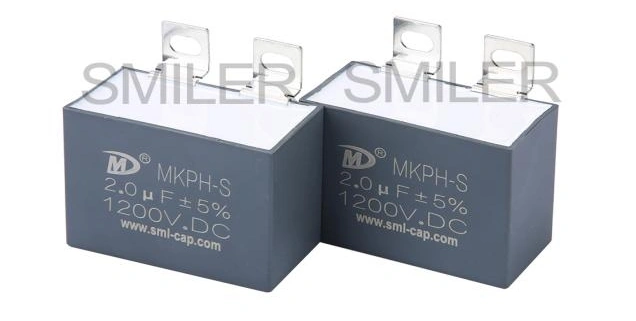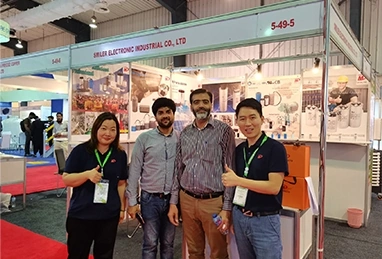Without a well-chosen RCD snubber, voltage spikes in power electronics setups can cause major breakdowns in parts. These spikes often come from inductive switching. They put heavy strain on semiconductors like IGBTs and MOSFETs. Switching circuits then faces risks of failures and reduced efficiency. Unchecked transients harm parts and cut short the life of devices. They also boost upkeep expenses from regular part swaps.
Besides that, lacking good surge control can sharply increase electromagnetic interference (EMI) amounts. Such interference might disrupt signals in nearby circuits. This leads to issues in delicate electronics and failure to meet EMC rules. In factory or vehicle uses where dependability and approvals matter a lot, these problems can turn into big work disruptions.
RCD snubber circuits aim to soak up and release extra energy during quick shifts in inductive loads. The resistor-capacitor-diode (RCD) setup teams up to limit voltage jumps. It thus lowers pressure on switching parts. In particular, they guard semiconductors such as IGBTs and MOSFETs from sharp voltage rises when current flow stops abruptly.
DC Filtering and Smoothing Snubber, IGBT Protection Output Filter. This role boosts system steadiness. It also steadies work in converters, inverters, and motor drives. By forming voltage shapes and cutting down vibrations, RCD snubbers create calmer electrical spaces. They also aid in better electromagnetic compatibility.

The capacitor in an RCD snubber holds a key spot. It takes in fast voltage jumps that show up across the switch at turn-off times. It pairs with the resistor to shape the energy release pattern. It also links with the diode to manage current direction.
The capacitance level affects the speed of the transient reaction. Meanwhile, its ESR (Equivalent Series Resistance) decides how well the vibrations settle. On top of that, picking the right capacitor helps handle resonance effects. Without it, noise or part strain could grow needlessly.
Picking an RCD snubber capacitor starts with grasping your circuit's power needs. The main factor is the capacitance amount. It needs to handle the expected transient energy. At the same time, it should not go beyond voltage or heat bounds. Just as vital, choose a capacitor with a voltage level that fits or tops the system's top transient voltages.
ESR matters a lot, too, in setting the settling action of the snubber setup. A smaller ESR gives stronger high-frequency work and less buzzing. Yet, you must weigh it against heat issues and energy release demands.
Surrounding conditions greatly affect how capacitors perform as time goes on. In hot areas, capacitors need steady power traits and little adjustment. The materials chosen should handle broad heat ranges. They must keep capacitance and ESR from big shifts.
In factory or open-air uses with moisture and dirt common, pick capacitors with strong covers and barriers. These prevent dielectric failures or rust. Likewise, gear on the move or spots with shocks need capacitors built for toughness. They ensure firm power links and build under force.
RCD snubber capacitors often face repeated strong current bursts from fast switching tasks. So, pulse load strength is key for lasting dependability in tough spots. Capacitors require materials and forms that endure these bursts. They should avoid power or physical wear.
Pulse-handling specs show how much top current and dv/dt the capacitor can take again and again without breaking. Choosing capacitors with solid pulse endurance keeps system balance. It also cuts down fix needs from early part breakdowns.
RCD snubber capacitors see broad use in factory motor drives. There, they act as shields for IGBTs against voltage jumps from back EMF in switching loops. DC Filtering and Smoothing Snubber, IGBT Protection. This use proves vital in auto systems. Downtime from part failures can cause large output drops.
In making setups with Variable Frequency Drives (VFDs), RCD snubbers aid device toughness. They filter out noise and trim voltage peaks during fast start-stop changes. This keeps motor work even under shifting loads.
Solar inverters and wind turbine converters deal with big swings in input power from weather shifts. These swings create voltage jumps that threaten switching parts if not handled. Designers add RCD snubbers to these systems. Thus, they curb surges well.
Snubber Capacitor technology proves key for better energy use and safe running in grid-tied setups. For example, solar string inverters with RCD snubbers show greater toughness against panel-caused surges. They also aid in hitting strict grid rules.
Electric vehicles depend heavily on DC/DC converters for power control in drive systems and side parts. Load changes during speed-ups or brake recovery bring switching strain. So, surge control becomes essential for steady work.
RCD snubber capacitors lessen EMI from these converters. This factor helps meet car EMC needs. In EV charging spots, snubbers boost safety. They shield switching parts from grid-caused surges at join or split times.
We are SMILER, a focused maker of strong capacitors made for surge control uses. Our main area is fresh ideas, stability, and exact building.
With ongoing growth and wide checks, SMILER offers capacitor fixes aimed at hard settings where surge handling counts most.

SMILER capacitors use toughened dielectric material. This lets them handle sharp dv/dt spots without breakdown risks or insulation loss. Such a strong pulse build fits them for quick-switching circuits. Think IGBT drivers or resonant converters.
Our capacitors have small ESR levels. These ensure good settling of fast oscillations. This trait lets builders get smoother switch shifts, lower EMI release, and better circuit firmness in quick-switching setups.
SMILER's RCD snubber capacitors work in broad heat spans. They suit air systems, transport like trains, and rough factory spots with common heat changes.
SMILER's capacitors have worked well in solar string inverter applications. There, they cut switching jumps from panels. These setups gain from better converter output and lasting firmness. Even under load swings from clouds or heat shifts, they hold up.
In plant auto systems with Variable Frequency Drives (VFDs), SMILER snubber capacitors join motor control boards. These fixes have aided in better system run time. They also lowered break rates from surge harm in fast-making runs.
A: To select the right RCD snubber capacitor, consider key parameters such as required capacitance based on energy dissipation needs, peak transient voltage levels for voltage rating selection, and ESR for proper damping performance. Environmental conditions like temperature range and humidity should also influence your choice.
A: SMILER is one of the top manufacturers specializing in high-performance RCD snubber capacitors designed for surge suppression applications across renewable energy, automotive, and industrial sectors.
A: Pulse load capability ensures the capacitor can withstand repetitive high-current pulses without degradation. This is essential for maintaining long-term reliability under rapid switching conditions typical in power electronics applications.
A: Yes, RCD snubbers help protect power switches from sudden surges during connection cycles and minimize EMI emissions critical for compliance with automotive safety standards.
A: Both serve important roles: ① DC Link Capacitor, ② Snubber Capacitor. DC link capacitors stabilize voltage between stages while snubber capacitors suppress switching transients directly at the IGBT terminals for surge protection.